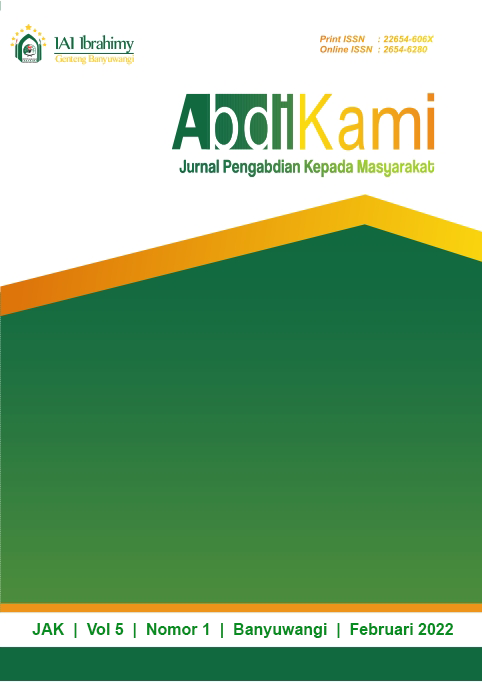MENGANGKAT POTENSI DESA MELALUI STICK BUAH BAGUS (BANJARSARI GUAVA STICK)
Abstract
The problems that need to be solved in Banjarsari village related to the community service activity plan for partners are as follows: First, the number of guava fruit plants and the amount of wasted guava and even scattered in Banjarsari village. Second, the lack of understanding of the community about the benefits and how to use guava. Based on these problems, the purpose of this service activity is to make guava sticks to improve skills and productivity to help the family economy. The approach method for implementing community service activities includes the community development method which is community development as a group of people working together within the community structure on a joint decision to initiate a process of change in their economic, social, cultural and environmental conditions. Based on the survey results after the implementation of the training on the suitability of the material with the needs of the community, 10 participants or 50% of all participants stated that the material was relevant to the needs of the community and 40% of the participants stated that this training material brought benefits and business opportunities for the community. The long-term plan of this community service activity is through training on making guava sticks in Banjarsari Village to develop innovation and improve the residents' economy.
Downloads

This work is licensed under a Creative Commons Attribution 4.0 International License.






















